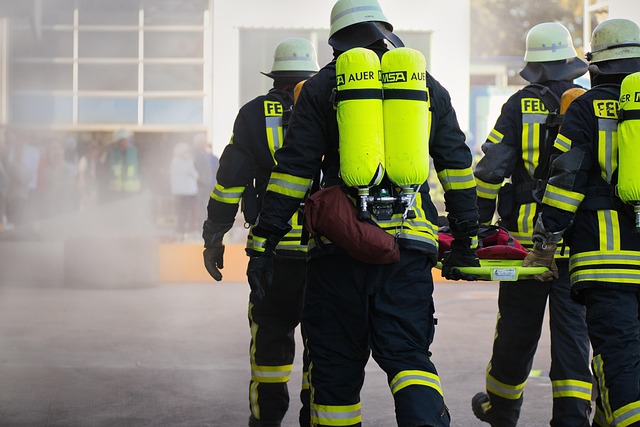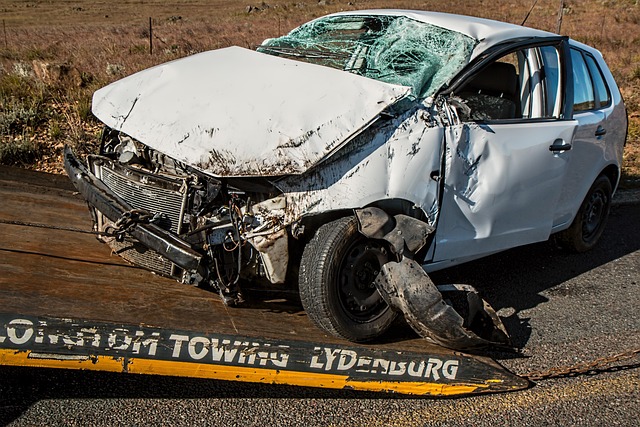Communities can significantly enhance road safety through collective efforts, leveraging Select Road Safety Tips to prevent accidents and protect all users. This involves identifying high-risk areas, promoting awareness, and fostering collaboration among residents, businesses, and experts. Key initiatives include educating on blind spots, fatigue recognition, and safe driving habits. By engaging stakeholders, distributing resources, and measuring success through reduced accident rates, communities create a culture of safety, ensuring responsible road behavior and improved infrastructure for everyone.
In the pursuit of constructing safe roads, community efforts play an invaluable role. This article explores strategic approaches to enhancing road safety, focusing on key areas such as understanding community involvement, identifying high-risk zones and their underlying causes, and selecting and implementing effective road safety tips. We delve into engaging local stakeholders for sustainable solutions, promoting awareness through initiatives, and measuring success through continuous improvement strategies. By emphasizing the importance of selecting and applying appropriate road safety tips, communities can foster safer driving environments.
- Understanding Community's Role in Road Safety
- Identifying High-Risk Areas and Their Causes
- Selecting and Implementing Effective Road Safety Tips
- Engaging Local Stakeholders for Sustainable Solutions
- Promoting Awareness and Education Through Initiatives
- Measuring Success and Continuous Improvement Strategies
Understanding Community's Role in Road Safety

In many communities, road safety is not just a matter for governmental bodies or transportation authorities; it’s a shared responsibility. Understanding and actively participating in road safety initiatives are key components to creating safer streets. Citizens can play a vital role in selecting and implementing Road Safety Tips that address preventing common traffic accidents, recognizing signs of fatigued drivers and remedies, and understanding blind spots while changing lanes. By being vigilant and informed, individuals contribute to a collective effort that enhances overall road safety within their community.
Identifying High-Risk Areas and Their Causes

Identifying high-risk areas is a pivotal step in enhancing road safety and preventing emergencies on the highway. These zones often emerge due to various factors, such as heavy traffic flow, poor visibility, uneven road conditions, or limited infrastructure for slow vehicles like bicycles. For instance, intersections lacking proper signaling or well-defined bike lanes can significantly increase the risk of accidents involving cyclists and motor vehicles.
When selecting road safety tips for these high-risk areas, it’s crucial to consider all users, including drivers, pedestrians, and cyclists. Implementing measures like speed bumps, advanced stop lines, and pedestrian crosswalks can mitigate risks. Additionally, promoting bicycle safety rules for kids, such as wearing helmets and adhering to traffic signals, is essential when planning safe road trips with families. These strategies not only improve overall safety but also encourage a culture of responsibility among all road users.
Selecting and Implementing Effective Road Safety Tips

When it comes to constructing safer roads within communities, selecting and implementing effective road safety tips is paramount. This process begins with identifying key areas for improvement, such as understanding blind spots while changing lanes, which can significantly reduce accidents. By promoting awareness about these blind spots, especially during merging or lane changes, community members can foster a culture of caution on the roads.
Additionally, focusing on planning safe road trips with family involves equipping drivers and passengers alike with knowledge about potential hazards. This includes recognizing signs of a potentially dangerous driver ahead, such as erratic behavior or speeding, which prompts everyone to stay alert and adhere to safety protocols. Through these collective efforts, communities can create an environment that prioritizes safety for all road users.
Engaging Local Stakeholders for Sustainable Solutions

Engaging local stakeholders is a key aspect of constructing safe roads within communities. By involving residents, local businesses, and transportation experts, sustainable solutions can emerge that address unique challenges specific to each area. This collaborative approach ensures road safety initiatives align with the needs and aspirations of the community, fostering buy-in and long-term success. For instance, workshops and public forums provide platforms for sharing Road Safety Tips, such as promoting responsible driving habits and advocating for improved infrastructure like bike lanes and pedestrian crossings.
Furthermore, engaging stakeholders facilitates the integration of diverse perspectives, including those from marginalized groups and individuals with disabilities. This inclusivity is vital in developing comprehensive solutions that cater to everyone’s needs. For example, a Bicycle Helmet Fitting Guide for adults and kids tailored to local preferences can enhance road safety for all users, while Traffic Congestion Coping Strategies for long drives, incorporating local insights, can help alleviate frustration during peak travel times. Access to roadside assistance essentials is also improved when communities are actively involved in decision-making processes.
Promoting Awareness and Education Through Initiatives

In an effort to promote road safety, communities worldwide are increasingly adopting proactive initiatives that educate residents on essential road safety tips. These programs often begin with awareness campaigns designed to highlight potential hazards and the importance of secure vehicle storage. By choosing safe parking practices, drivers can significantly reduce risks associated with leaving their vehicles unattended in public areas. Such initiatives may include distributing brochures containing select road safety tips, conducting workshops, and leveraging social media platforms to reach a broader audience.
Through these educational endeavors, communities aim to equip residents with the knowledge needed for navigating busy city streets safely. They teach drivers and pedestrians alike about the importance of adhering to traffic rules, maintaining awareness, and recognizing potential dangers. Moreover, they promote the necessity of carrying roadside assistance essentials, ensuring individuals are prepared for unexpected breakdowns or emergencies on the road. These collective efforts ultimately strive to foster a culture of safety, reducing accidents and saving lives.
Measuring Success and Continuous Improvement Strategies

Measuring success and implementing continuous improvement strategies are vital components in constructing safe roads within communities. By establishing clear metrics, such as reduced accident rates, lower severity of injuries, and increased adherence to road safety regulations, we can objectively assess the effectiveness of implemented Road Safety Tips. These metrics provide a comprehensive view of progress made and areas that still need attention.
Community involvement plays a significant role in this process. Feedback from residents, regular reviews of collision data, and ongoing observations of driver behavior help identify emerging trends and potential hazards. Utilizing these insights, communities can adapt their strategies and employ innovative solutions like enhancing lighting in problematic zones, installing additional signs of low-light visibility enhancement techniques for drivers, or conducting targeted campaigns to raise awareness about maintaining vehicle brakes for optimal stopping power. Such proactive measures ensure that road safety efforts remain dynamic and responsive to the evolving needs of the community.
Community efforts play a pivotal role in constructing safe roads. By understanding the unique challenges of each area, identifying high-risk zones, and engaging local stakeholders, we can implement tailored Select Road Safety Tips for lasting impact. Through collaborative initiatives and continuous improvement strategies, we foster a culture of awareness and education that ultimately leads to safer communities and reduced road accidents.
